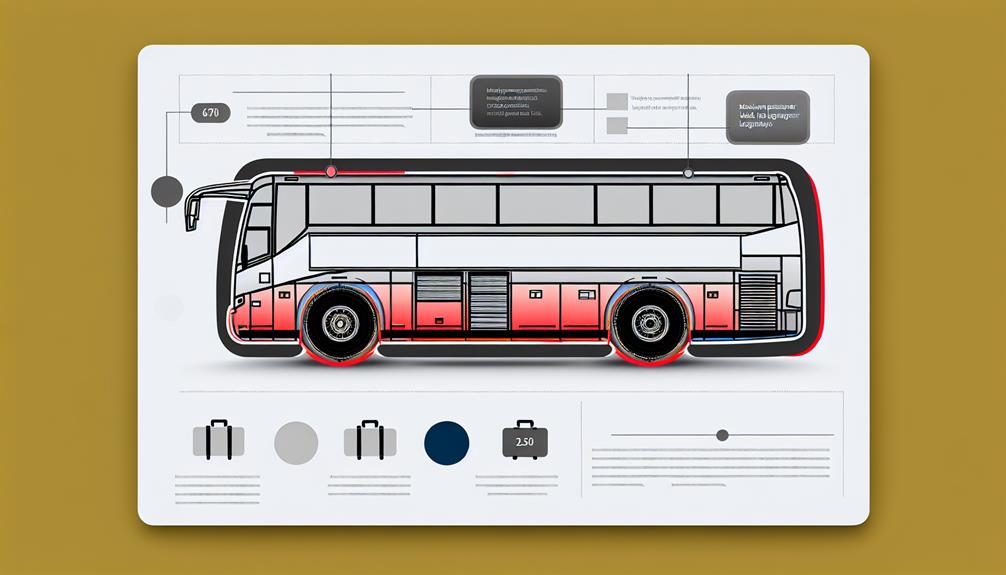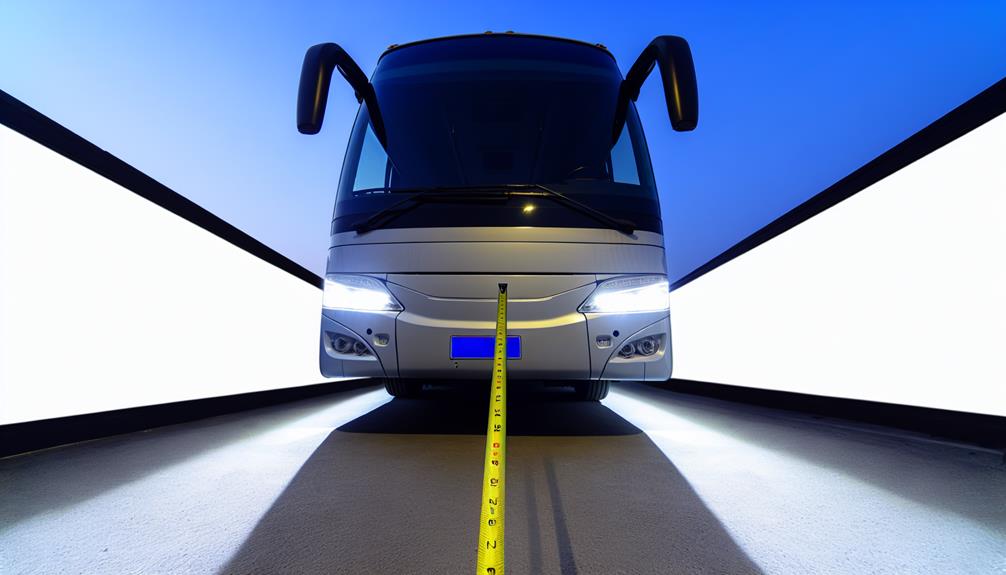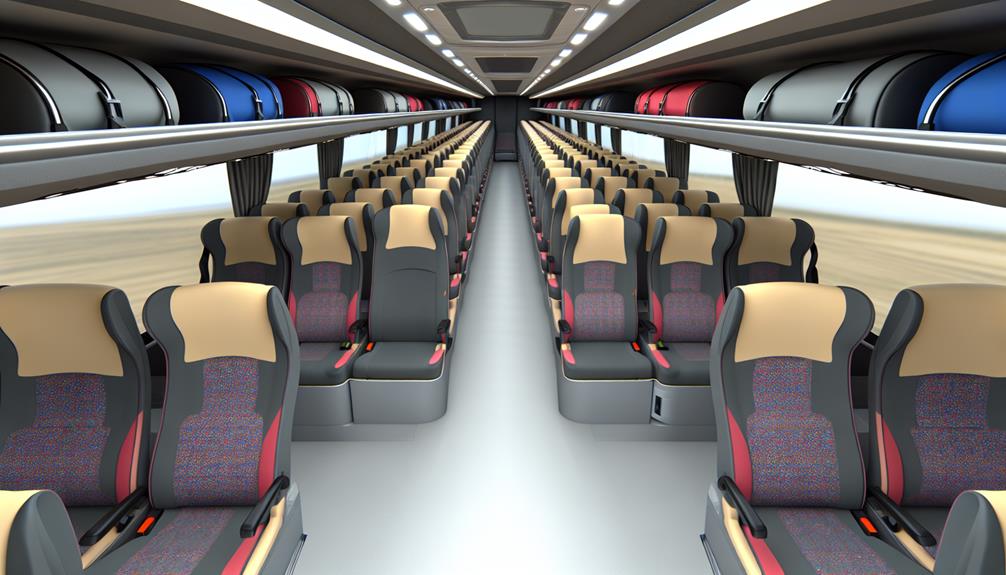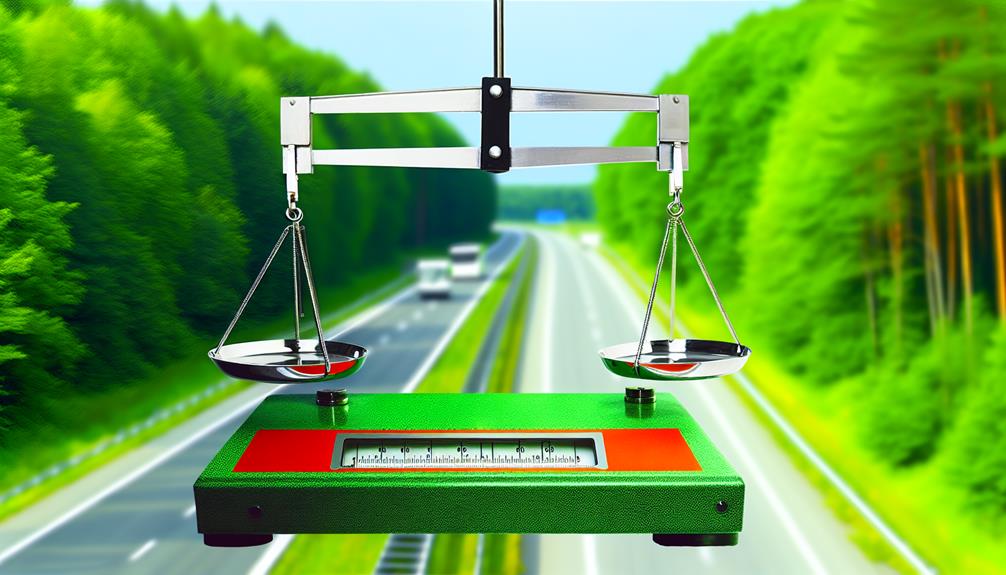What Are Prevost Bus Dimensions and Weight Capacity?
Did you know Prevost buses can stretch up to 60 feet in length, making them one of the most spacious options on the market? With dimensions that cater to a variety of needs, these buses offer impressive weight capacities that guarantee both safety and performance. As you consider the specifications, it's essential to understand how these factors influence passenger comfort and operational efficiency. So, what do these dimensions and weight limits really mean for your journey?
Overview of Prevost Buses

Prevost buses are known for their exceptional quality and performance in the transportation industry. With a rich Prevost history dating back to 1924, the company has consistently pushed the boundaries of bus manufacturing. You'll appreciate how their commitment to innovation has resulted in superior vehicles that prioritize safety and comfort.
Prevost features include state-of-the-art technology, such as advanced braking systems and fuel-efficient engines, making them ideal for long-distance travel. You can count on robust construction, ensuring durability for various terrains and conditions, which is vital for those seeking the freedom of the open road.
The ergonomic designs focus on passenger convenience, offering spacious interiors, ample storage, and customizable layouts. This flexibility allows you to create the perfect travel experience whether for group tours, charters, or private use.
Moreover, Prevost buses have an outstanding reputation for reliability, minimizing downtime and maximizing your travel opportunities. When you choose a Prevost, you're not just investing in a mode of transportation; you're embracing a legacy of excellence that empowers your adventures. Explore the possibilities with Prevost and experience the difference in performance and comfort.
Standard Dimensions of Prevost Models
When it comes to standard dimensions, Prevost models offer a range of sizes to accommodate various transportation needs. Whether you're looking for a compact option or a spacious coach, Prevost features designs that cater to your preferences. The typical length of Prevost buses ranges from 40 to 45 feet, providing flexibility for different travel scenarios.
Their width typically measures around 102 inches, ensuring a comfortable interior space that maximizes passenger comfort. Additionally, the height can vary, usually falling between 12.5 to 13.5 feet, allowing for ample headroom while maintaining road compliance.
The standard floor height is around 34 inches, which contributes to ease of entry and exit for passengers. This thoughtful Prevost design not only enhances accessibility but also aligns with your desire for freedom on the road.
Moreover, these dimensions allow for effective maneuverability without sacrificing passenger capacity. With a range of configurations available, you can select a Prevost model that best suits your travel requirements, ensuring that you experience the journey without restrictions while enjoying the freedom to explore.
Weight Capacity Specifications

While choosing a bus, understanding the weight capacity specifications is vital for guaranteeing safety and efficiency. Prevost buses are designed with robust engine specifications that support impressive weight limits, allowing you to transport passengers and cargo without compromising performance. Typically, the weight capacity for a Prevost bus ranges between 40,000 to 50,000 pounds, depending on the model and configuration.
It's important to take into account the total weight of your bus, including the vehicle itself, passengers, luggage, and any additional equipment. Exceeding the weight capacity can lead to safety hazards, such as reduced handling and braking efficiency. Prevost incorporates advanced safety features like anti-lock braking systems and electronic stability control, which enhance safety during operation, particularly under heavy loads.
To optimize your bus's performance, regularly check the engine specifications and verify they align with your weight requirements. This will not only prolong the life of your vehicle but will also contribute to a more enjoyable journey. By prioritizing weight capacity specifications, you can make informed decisions that enhance safety, efficiency, and freedom in your travel experiences.
Length Variations Across Models
Many factors influence the length of a bus, and Prevost models showcase a range of dimensions to meet diverse needs. You'll find length variations among different models, allowing you to choose the right fit for your requirements. Here's a quick comparison highlighting key design features and lengths:
| Model | Length (ft) | Key Design Features |
|---|---|---|
| H3-40 | 40 | Spacious interior, smooth ride |
| X3-45 | 45 | Advanced aerodynamics, high capacity |
| X3-30 | 30 | Compact design, urban versatility |
| H3-45 | 45 | Luxurious amenities, optimized space |
| X3-60 | 60 | Extended length for large groups |
These model comparisons illustrate how Prevost balances functionality with comfort. Whether you're transporting a small group or planning for a larger event, knowing the lengths of various models will help you make an informed decision. Each model's unique design features contribute to its performance and usability, ensuring you have the freedom to choose what best suits your needs on the road.
Height and Width Measurements

Understanding the height and width measurements of Prevost buses is essential for ensuring compatibility with various infrastructure such as bridges, parking garages, and loading zones. Typically, Prevost buses have a height ranging from approximately 12 to 13.5 feet and a width of about 8.5 feet. These dimensions are designed with an aerodynamic design in mind, allowing for better fuel efficiency and enhanced performance on the road.
When considering your travel plans, it's vital to account for these height and width specifications. Many locations have specific safety standards regarding vehicle dimensions, and exceeding these limits can lead to fines or accessibility issues. For instance, low-clearance areas and narrow streets may pose challenges for larger buses.
Interior Space Dimensions
After considering the exterior dimensions, it's important to explore the interior space dimensions of Prevost buses, as these measurements directly impact passenger comfort and functionality. The interior layout is designed to maximize space while providing flexibility for various seating arrangements. Knowing these dimensions helps you envision the freedom and comfort you'll experience on the road.
Here are some key aspects of the interior space dimensions:
- Ceiling Height: Typically ranges from 6 feet 4 inches to 6 feet 10 inches, allowing ample headroom.
- Width: Interior widths usually measure around 8 feet, providing generous space for movement.
- Floor Length: Depending on the model, the floor length can vary from 35 to 45 feet, accommodating a variety of layouts.
- Seating Capacity Options: Layouts can be customized to include anywhere from 30 to 56 seats, giving you freedom in configuring for comfort or capacity.
These dimensions not only enhance the overall travel experience but also allow for versatile designs that cater to diverse needs. Whether you're using it for a cozy group trip or a larger event, Prevost buses offer an adaptable space that feels like home on wheels.
Capacity for Passengers and Cargo

When planning a trip or event, knowing the capacity for passengers and cargo in a Prevost bus is essential for guaranteeing everyone and everything fits comfortably. Prevost buses typically seat between 40 to 60 passengers, depending on the model and configuration you choose. This range allows you to accommodate various group sizes while maintaining a focus on passenger comfort.
In addition to seating, you'll find ample storage space for luggage and equipment. The cargo compartments are designed to maximize organization, allowing you to stow belongings securely during transit. This is particularly valuable for long trips or tours, where easy access to cargo can enhance the overall experience.
When you choose a Prevost bus, you're not just selecting a vehicle; you're prioritizing a spacious, comfortable journey for your passengers without sacrificing the ability to transport necessary cargo. So, whether you're organizing a corporate event, a school trip, or a family reunion, understanding the capacity for passengers and cargo can help you plan effectively and guarantee that everyone enjoys the journey.
Comparison of Model Specifications
Comparing model specifications of Prevost buses reveals essential details that can considerably impact your travel experience. When you choose a bus, understanding its unique model features and safety standards is vital for ensuring both comfort and security on the road. Here's what you should consider:
- Length and Height: Different models vary in dimensions, affecting passenger capacity and maneuverability.
- Engine Power: Some models offer more horsepower, ensuring a smoother ride on various terrains.
- Weight Capacity: Each model has its own weight limitations, impacting how much cargo you can carry without compromising safety.
- Seating Arrangement: The layout can greatly affect your travel experience, from legroom to accessibility.
Importance of Weight Distribution

Weight distribution plays a critical role in the overall performance and safety of Prevost buses. Proper load balancing guarantees that weight is evenly distributed across the vehicle, which directly affects handling, braking, and tire wear. When you load a bus, it's crucial to take into account how the weight is positioned. An uneven load can lead to increased stress on certain parts of the bus, which could compromise its structural integrity over time.
Safety considerations are paramount. An improperly balanced load can cause the bus to tip or roll, especially during sharp turns or sudden stops. By adhering to recommended weight limits and guaranteeing even distribution, you can enhance stability and control, ultimately providing a safer journey for passengers.
Additionally, ideal weight distribution improves fuel efficiency. When a bus is balanced, it requires less energy to maneuver, translating into lower operational costs and a reduced carbon footprint. Regularly checking your load and making adjustments as needed can maximize both performance and safety. Remember, every trip you take is not just a drive; it's a commitment to guaranteeing your bus operates at its best.
https://myprevost.net/wp-content/uploads/2024/09/728x90.jpg
